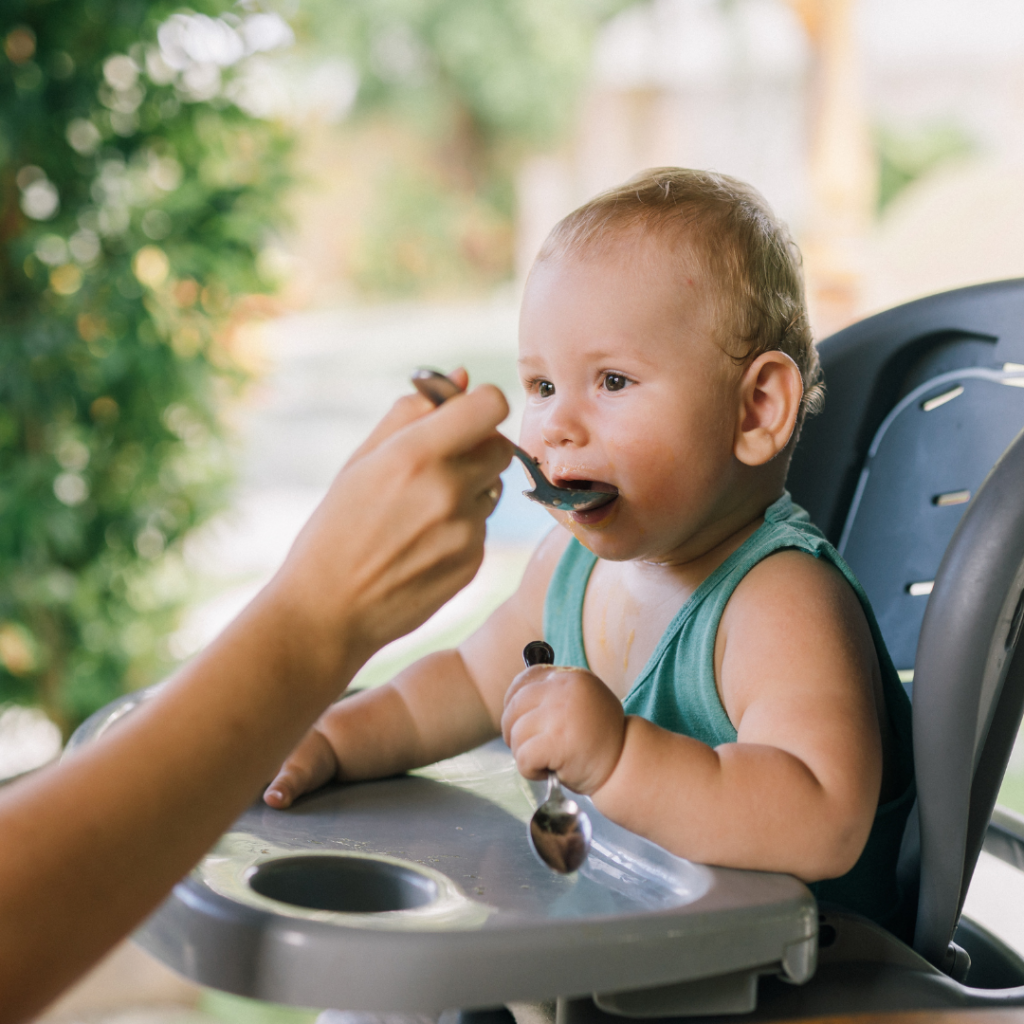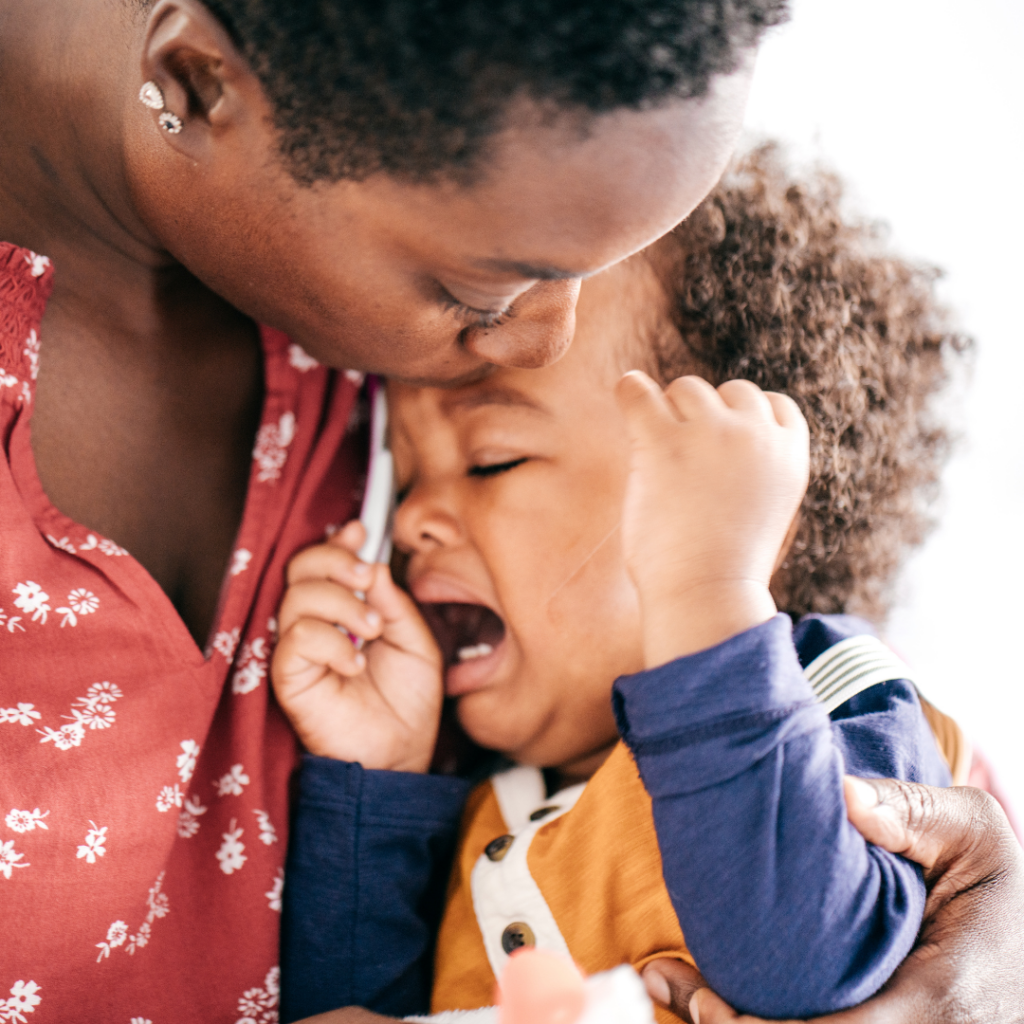In a recent webinar on sensory exploration with infants, Teresa Narey, curriculum manager at FunShine Express! joined us to discuss how we can set a strong foundation for infant development. She explained how to do this with safe and enjoyable sensory experiences that promote growth and development. Teresa also shared strategies for creating open-ended sensory activities with everyday tools and objects in the classroom, and the importance of observation and assessment when setting up sensory experiences.
Infant developmental milestones for educators
Infancy is a period of rapid fine and gross motor development. Babies are discovering their body parts and gaining control over them. An educator’s best tool in planning sensory experiences is a strong foundation in infant development.
0-3 month infant milestones
According to Parlakian and Lerner (2008), babies are likely:
- beginning to recognize the faces, voices, and smells of loved ones
- using sounds, facial expressions, and body movements to communicate
- using their bodies to make things happen (e.g., grip)
- learning to trust that loved ones are reading/responding to their cues

3-6 month infant milestones
At this age, babies are likely:
- pushing themselves up
- sitting with support
- rolling to move closer to objects of interest
- exploring with their fingers, hands, and mouths
- reaching for and grasping objects
6-9 month infant milestones
At this age, babies are likely:
- dropping objects and looking to see where they went (object permanence)
- picking up small objects using their thumb and other fingers
- sitting on their own
- crawling/scooting to move around (possibly pulling to stand)
- imitating the actions of others
9-12 month infant milestones
At this age, babies are likely:
- beginning to follow simple directions
- crawling/scooting more assertively
- walking with support; some independently
- repeating tasks over and over again
Setting up sensory exploration for infants
Sensory work is the inherent work of infancy: it is open-ended and accomplished with everyday tools and objects. Observation and assessment are key to setting up sensory experiences and knowing where to guide children. Infant sensory experiences can involve basic art materials, everyday objects, and/or experimentation with observation.
Offer open-ended play with the following art materials:
- tempera paint or finger paint
- contact paper
- stickers
- paper/cardboard
- playdough or clay
- dot markers
- crayons/chalk/markers/colored pencils
- ink pads/large stampers

Offer open-ended play with everyday objects such as:
- brushes
- kitchenware
- large nature items
- baskets/boxes
- mirrors
- textured toys/objects
- fabric
- musical instruments
- water/soil
- bubble wrap
As children experiment with the items listed above, observe and assess:
- Each child’s level of interest in the materials provided
- How to modify the activity if necessary
- How to expand the activity based on the children’s interests
- The best way to share the experience with families
Remember that safety with sensory play is important: Make sure materials are non-toxic, washable, and avoid food-based sensory experiences. Be sure to be present and attentive in your classroom.
Communicating with families

Inform parents about your approach to sensory learning from the moment their children start in your classroom. Photograph children as they engage with materials and regularly share these photos with parents.
Develop a portfolio for each child that demonstrates their fine and gross motor development throughout the year.
Do your best to protect children’s clothing by using old t-shirts, smocks, or experimenting with materials while in diapers. Give families a heads up about any upcoming messy sensory experiences. Keep a change of clothes on hand so that children can return home in a clean outfit at the end of the day!
Re-evaluating our time and effort as educators
How do we determine what children are ready to achieve next?
- Know which milestones have been previously met
- Know each child’s emerging skills
- Know each child’s interests
- Know the objective/goal
Ensure your learning environment is prepared for sensory experiences. Choose simple materials and have them ready. Also, keep your clean-up materials nearby!
Watch the full webinar on how to engage in sensory exploration with infants here!


